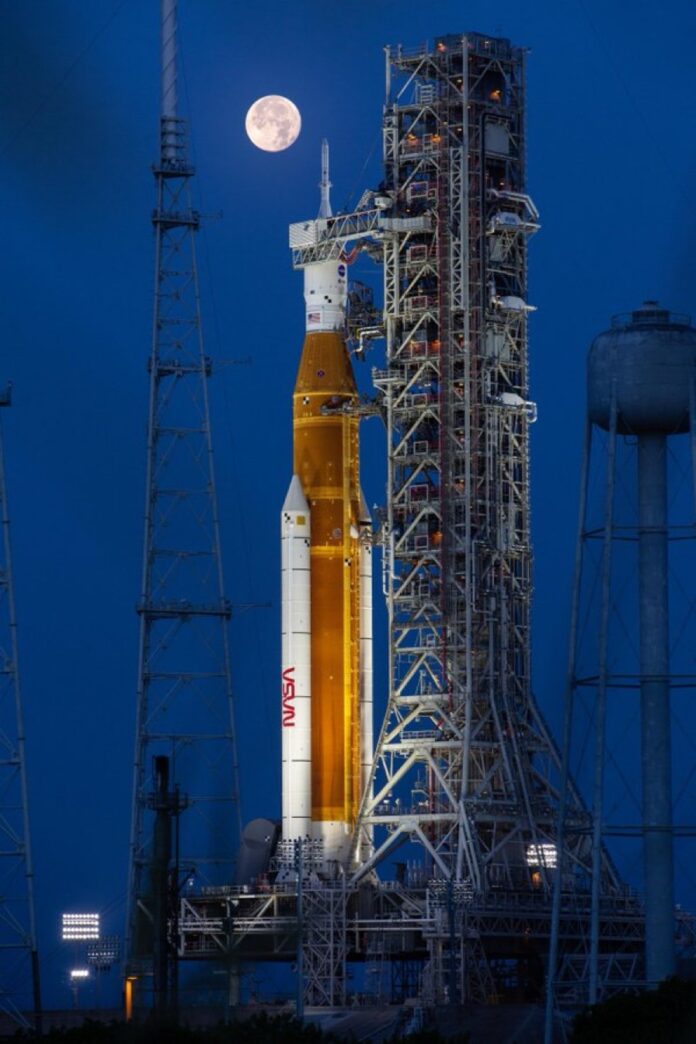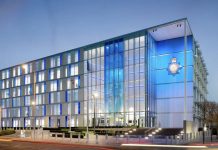Fuel leaks have forced NASA to scrub the launch of its new moon rocket on a no-crew test flight.
The next launch attempt will not take place until Friday at the earliest.
The 322-foot Space Launch System rocket was set to lift off Monday morning with three test dummies aboard on its first flight, a mission to propel a capsule into orbit around the moon.
The shakedown flight, when it happens, will be a big step forward in America’s quest to put astronauts back on the moon for the first time since the end of the Apollo program 50 years ago.
NASA hopes to send four astronauts around the moon in 2024 and land humans there as early as 2025.
NASA repeatedly stopped and started the fueling of the Space Launch System rocket with nearly 1 million gallons of super-cold hydrogen and oxygen because of a leak. The fueling already was running nearly an hour late because of thunderstorms off Florida’s Kennedy Space Center.
The leak of highly explosive hydrogen appeared in the same place that saw seepage during a dress rehearsal back in the spring.
Then a second apparent hydrogen leak turned up in a valve that had caused trouble in June but that NASA thought it had fixed, officials said.
Later in the morning, NASA officials spotted what they feared was a crack or some other defect on the core stage — the big orange fuel tank with four main engines on it — but they later said it appeared to be just a buildup of frost.
The rocket was set to lift off on a mission to put a crew capsule into orbit around the moon. The launch represents a milestone in America’s quest to put astronauts back on the lunar surface for the first time since the Apollo program ended 50 years ago.
NASA’s assistant launch director, Jeremy Graeber, said after the repeated struggles with the first leak that the space agency would have to decide whether to go forward with the Monday morning launch.
“We have a lot of work to get to that point,” Graeber cautioned.
The 322-foot (98-meter) spaceship is the most powerful rocket ever built by NASA, out-muscling even the Saturn V that took the Apollo astronauts to the moon.
No astronauts were inside the rocket’s Orion capsule. Instead, the test dummies, fitted with sensors to measure vibration, cosmic radiation and other conditions, were strapped in for the six-week mission, scheduled to end with the capsule’s splashdown in the Pacific in October.
Even though no one was on board, thousands of people jammed the coast to see the rocket soar. Vice President Kamala Harris was expected among the VIPs.







